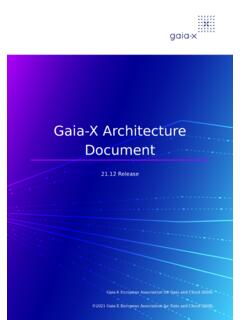Transcription of The Five-Step Process Framework for Project Development
1 DOE OFFICE OF INDIAN ENERGY The Five-Step Process Framework for Project Development Project Development Process : What Is It? Framework based on experience Focuses on key decision points Shows that Project Development is iterative Emphasizes that delaying or deciding against a Project that does not meet current goals is a viable outcome and option 2 Project Uncertainty/Capital at Risk 3 Unknowns Investment Revenue pays off invested $ Project Operation Financial Close Step 1, Step 2, Step 3 Step 4 Step 5 Construction Development 1 Potential 3 Refinement 5 Operations & Maintenance 2 Options 4 Implementation 1 Potential 4 Potential Options Refinement Implementation Operations & Maintenance Step 1.
2 Site, Scale, Resource, and Community Market Potential 5 Purpose: Determine whether basic elements for a successful Project are in place Tasks: possible sites for Project locations the energy load/demand for these sites using past electric bills for these facilities renewable energy resource tribal facility electric cost data, regulations, and transmission and interconnection requirements community market potential for renewable sales. Your community is the marketplace/energy user. or communicate with the right team those in positions or with knowledge to facilitate, approve, and champion the Project Sizing Your Renewable Energy System Current Load Use your past monthly energy bills to determine the demand.
3 Start with your strategic energy plan Consider your scale: residential, commercial, or industrial Consider the current tariff structure (how the energy is metered and billed) Future Load At which energy scale does your community expect the most growth in energy demand? How much will you need? Other Limiting Factors interconnection Net metering cap Rebate limits 6 Resource, Production & Savings Assess available local energy resources Production Online tools (PV Watts) Field based measuring equipment Resource maps 7 Solar PV Energy Resource Mapping 8 Wind Energy Resource Mapping: 80 m 9 Local Site Considerations 10 Local Site Considerations Urban Centers 11 Local Site Considerations Rivers 12 Local Site Considerations Road Access 13 Local Site Considerations Suitable Area 14 Initial Site Considerations Example 15 Initial Solar Site Considerations Slope> 5% 16 Initial Wind Site Considerations Slope>20% 17 Wind Siting Obstructions 18 Source: OpenEI, Priorities: Where to Install Solar On the built environment where unshaded.
4 Existing building roofs that have an expected life of at least 15 more years and can accept added load - typically 2-4 pounds /ft2. Reduces solar load on building All new buildings all new buildings should be solar ready See Solar Ready Buildings Planning Guide: Over parking areas energy generation and nice amenity On compromised lands such as landfills and brownfields Saves green-fields for nature If installed on green fields, minimize site disturbance; plant native low height vegetation as needed 19 Solar PV Placement 20 Facility Scale Hybrid System, NPS Range Station, San Miguel Island, CA.
5 Photo by Kent Bullard, NREL 6325496 PV Panels on Grand Ronde Tribal Housing Authority carport. Photo by GRTHA, NREL 11659046 Ballasted PV System on ESIF. Photo by Dennis Schroeder, NREL 13163640 Photo by Michael Deru. NREL 10075381 Solar Photovoltaics (PV) Fixed Tilt/Tracking Fixed Tilt Facing Equator tilt=latitude tilt<latitude for summer gain tilt>latitude for winter gain One Axis Tracking around axis tilted or flat Two Axis Tracking both azimuth and altitude of sun around two axes 21 Solar Assessment: PV is VERY Shade Sensitive Once preliminary site assessment has been completed, you want to know: Estimated system size Estimated production (kilowatt-hour [kWh]/yr) Estimated cost Some economic analysis Photos top to bottom.
6 NREL 10314 and 17509 Shade Analyzer 22 PVWATTS Tool for Basic PV Modeling Free interactive map-based tool allows you to: Estimate expected monthly and annual solar resource values Quickly obtain performance estimates for grid-connected PV systems Get a first cut of potential solar output Can identify potential incentives that a PV system in a particular area may be eligible for 23 Activity Resource Map/Siting 24 1 Potential 3 Refinement 5 Operations & Maintenance 2 Design 4 Implementation 2 Options 25 Potential Options Refinement Implementation Operations & Maintenance 26 Step 2: Roles, Business Structures, & Regulatory Considerations Purpose: Determine ownership structure and permitting considerations if any.
7 (Note: It is likely that internal tribal permitting is required if developed on tribal lands, however, state and federal permitting may be required if the Tribe is dealing with fee or trust land outside the tribal land holdings.) Tasks: tribal role(s) and risk allocations/business structure permitting needs and site use considerations interconnection rules and net metering options with the local utility Outputs: tribal roles on business structure the permit needs and Process interconnection and net-metering options 27 Project MEMBERS AND ROLES Potential Team Members Tribal Members Leadership, staff, community members Attorneys, engineers, professionals Energy champions (key success component) Developer Business managers, engineers, permitting specialists, investors, banks Utility Attorneys, planning specialists, operations specialists, regulatory specialists, finance.
8 Government Tribal government, federal, state and local entities, regulating bodies (public utilities commission), Bureau of Indian Affairs, DOE. 28 The Role of the Project Champion Project Champion Employ relevant expertise: legal and finance; technical and construction; power marketing Ensure all relevant players are engaged in the Project at the right time, levels, and roles Engage Tribal leadership and Project and business management (professionals and staff) 29 Tribal Roles 30 More Capital Intensive Owner/Operator Equity Investor Lender Less Capital Intensive Off-taker Land Owner O&M subcontractor 31 31 Project OWNERSHIP OPTIONS Importance of Choosing the Right Ownership Structure Protect tribal assets Preserve tribal sovereignty Minimize potential liability Facilitate Project construction 32 Photo by Brian Hirsch.
9 NREL 20893 Evaluating Ownership Options Business Structure Option Simplicity and Quick Formation Shield Tribal Assets from Business Liabilities Avoid Federal Income Taxes Separate Business from Tribal Control Ability to Secure Financing Tribal Instrumentality* Political Subdivision* Section 17 Corporation* Tribal Law Corporation* State Law Corporation LLCs/Joint Venture LLC (only if Tribe is sole member) 33 (*Can be protected by tribal sovereign immunity) Ownership Structure Resources Renewable Energy Development in Indian Country: A Handbook for Tribes (Douglas MacCourt and Ater Wynne LLP) Tribal Business Structure Handbook (The Office of the Assistant Secretary Indian Affairs Department of Interior) Structuring Tribal Business Enterprises and Joint Ventures (Kathleen M.)
10 Nilles, and Karen J. Atkinson) Tribal Energy Development Primer (Quapaw Tribe of Oklahoma) 34 35 interconnection & NET METERING What Is interconnection ? An agreement required to connect your facility- or community-scale system to the grid distribution -level interconnection is largely the domain of state policy Rules and regulations are highly variable between states Involve your utility early and often in the Project Development Process Many utilities have their interconnection procedures and the necessary contacts posted on their website Time, Technical Requirements and Cost 36 interconnection Process for PV Building Permitting and interconnection Example Installing a renewable energy Project requires multiple approval and Process steps.













